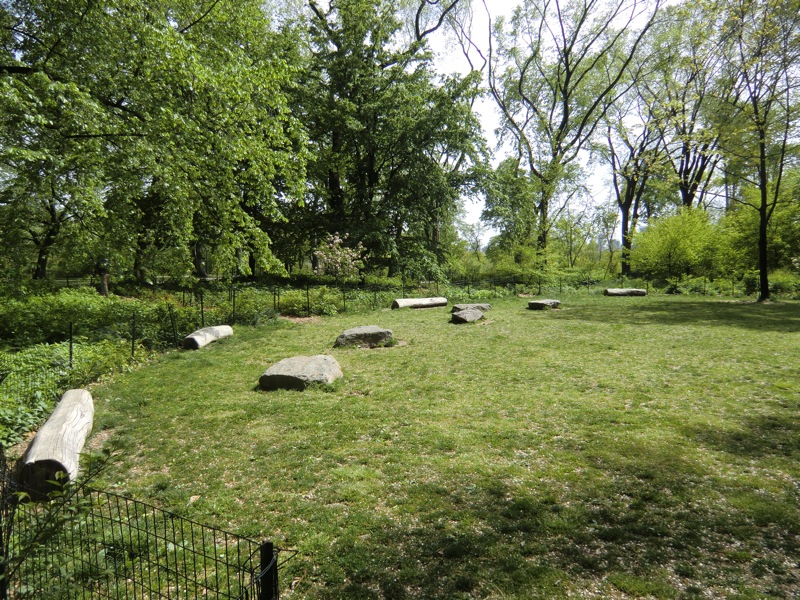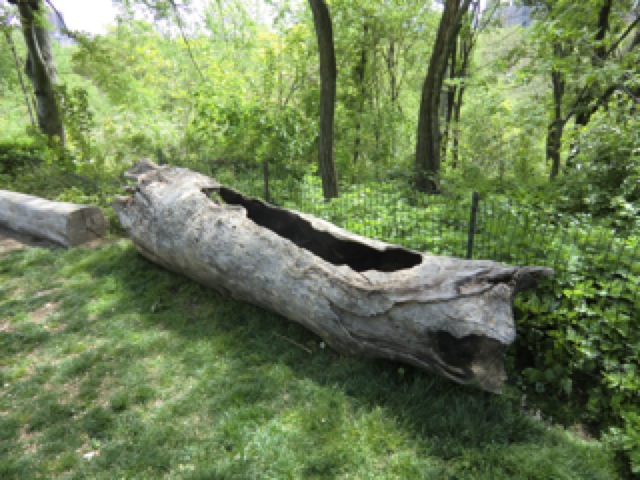Strangers’ Gate, Children’s Glade
Strangers’ Gate, one of 20 named entrances into New York’s Central Park, stands near the park’s northwest corner under the shadow of the Great Hill. No one seems to know how the gate got its name, which is chiseled into the entry wall, so I like to think it is there to welcome strangers to this quiet oasis in the midst of a city that can wear you out. If you climb the 77 stone steps to the top of the Great Hill, you come at once on a small stone that marks the Peter Jay Sharp Children’s Glade. This is an urban playground unlike any I have ever seen. It has no swings or slides, no sandboxes or ball fields. It has only some large rocks set about an open lawn, trunk-sized logs on which to climb or sit (and one in which to hide), trees and flowers now coming into bloom, and paths that give the place a sense of unthreatening mystery and quiet adventure.
 Is a playground for the imagination, a place of quiet contemplation that beckons children with its simple beauty. It seems a novel concept in a world of computers, organized sports and flat-screened TVs. But it is what educators such as Richard Louv in Last Child in the Woods and David Orr in Earth in Mind have been trying to tell us we are losing as we become strangers to the world of nature from which we spring.
Is a playground for the imagination, a place of quiet contemplation that beckons children with its simple beauty. It seems a novel concept in a world of computers, organized sports and flat-screened TVs. But it is what educators such as Richard Louv in Last Child in the Woods and David Orr in Earth in Mind have been trying to tell us we are losing as we become strangers to the world of nature from which we spring.
